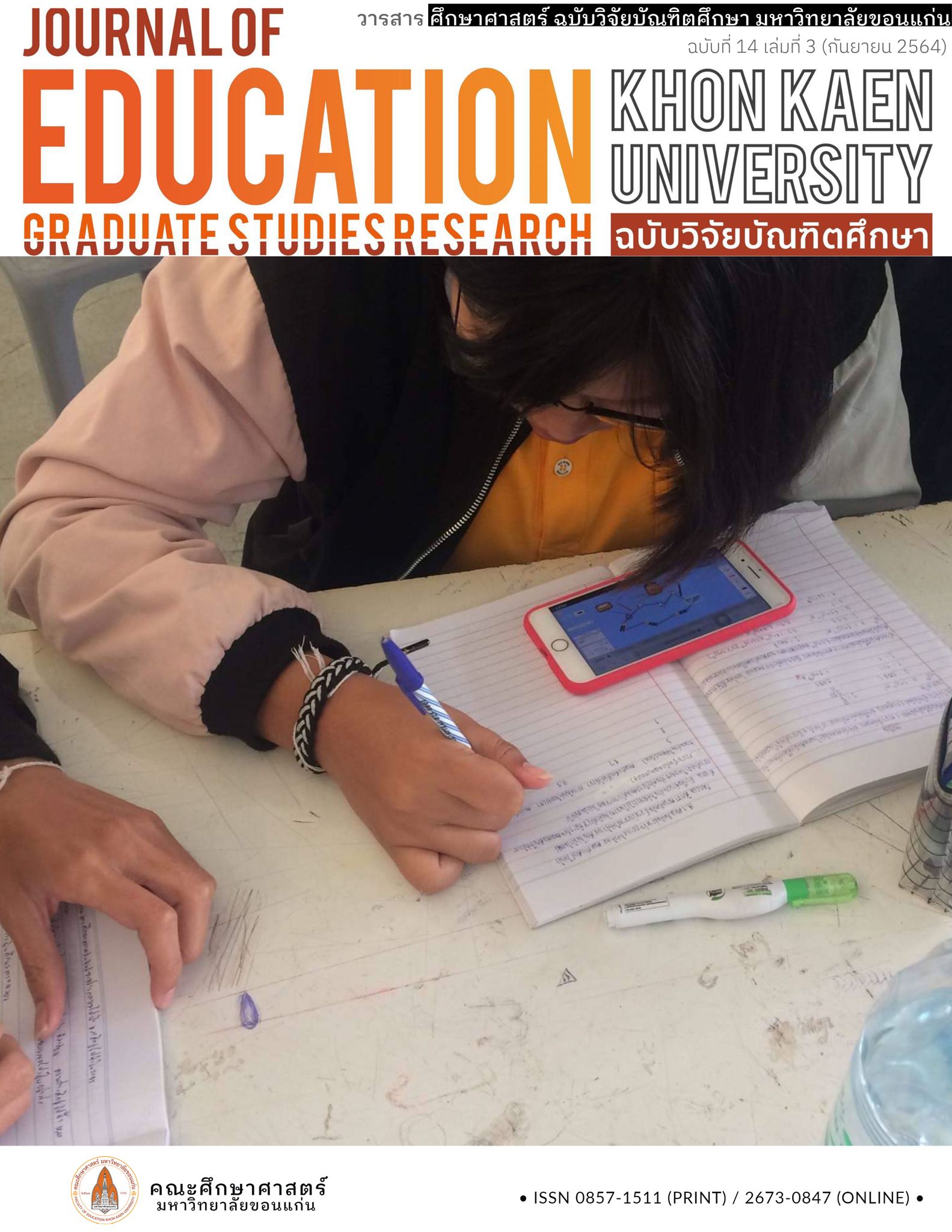A Teaching Design by Seamless STEM Learning Approach on a Relationship of Electric Current and Potential Difference: A Result
Main Article Content
Abstract
Nowadays, the advancement of digital technology in science learning has been widely recognized and digital technology has been innovative used in current school science education. To meet students’ learning preferences that can take place anywhere and anytime, understanding of students’ perception of digital learning environment is a key factor in the effective seamless learning management. To address this issue, this study aimed to develop a seamless STEM learning experience on a relationship of electric current and potential difference regarding meaningful combination of inside and outside school learning context. 44 eleventh-grade students in a public secondary education school located at Roi Et Province has been administered a 5-points Likert rating scale questionnaire after participating with the proposed learning experience. The results showed that they perceived positively to all eight dimensions in 83-91 percentage, and the highest percentage were EU, CO, MS, RE, AC, SN, TG, and IL, respectively. Moreover, there was no statistically significant different between female and male students in term of their perceptions on the eight dimensions. This finding implied that both female and male student perceived positively and equally towards the digital learning environmental preference for the seamless STEM learning experience. Therefore, this proposed learning experience could be an alternative way to promote new active learning process for current generation of secondary school students in Thailand.
Article Details

This work is licensed under a Creative Commons Attribution-NonCommercial-NoDerivatives 4.0 International License.
References
คมเขต เหมือนศรีชัย และนิวัฒน์ ศรีสวัสดิ์. (2558). การประยุกต์การเรียนรู้แบบไร้ขอบเขตสำหรับสาระความบันเทิงบนโทรศัพท์เคลื่อนที่. วิทยานิพนธ์ปริญญาวิศวกรรมศาสตรมหาบัณฑิตสาขาวิชาวิศวกรรมคอมพิวเตอร์ บัณฑิตวิทยาลัย มหาวิทยาลัยขอนแก่น.
พิมพร ผาพรม และนิวัฒน์ ศรีสวัสดิ์. (2561). การส่งเสริมแนวคิดหลักและการปฏิบัติงานทางวิทยาศาสตร์และวิศวกรรมศาสตร์ของนักเรียนชั้นมัธยมศึกษาปีที่ 6 ด้วยโมดูลการเรียนรู้สะเต็มบนฐานวิทยาศาสตร์สืบเสาะ เรื่อง วิทยาศาสตร์ระดับนาโน. วารสารบัณฑิตวิจัย, 9(2), 43-67.
Apereo Foundation. (2017). Apereo Learning Analytics Initiative: Open LRS. Retrieved September 1, 2017, from http://www.apereo.org/projects/openlrs.
Buck L. B., Bretz, S. L., and Towns, M. H. (2008). Characterizing the Level of Inquiry in the Undergraduate Laboratory. Journal of College Science Teaching, 38(1), 52-58.
Chan et al. (2006). One-to-one technology-enhanced learning: an opportunity for global research collaboration. Research and Practice in Technology-Enhanced Learning, 1(1), 3–29
Eshach, H. (2007). Bridging In-school and Out-of-school Learning: Formal, Non-Formal, and Informal Education. Journal of Science Education and Technology, 16(2).
IMS Global Learning Consortium, Caliper analytics. (2015). Retrieved September 1, 2017 from http://www.imsglobal.org/activity/caliper.
Kearney, M., Burden, K., and Rai, T. (2015). Investigating teachers’ adoption of signature mobile pedagogies. Computers & Education, 80, 48–57.
Kelton, D., Sadowski, R. P., and Sturrock, D. T. (2003). Simulation With Arena. Publisher : McGraw-Hill, New York.
Kelley, T. R., & Knowles, J. G. (2016). A conceptual framework for integrated STEM education. International Journal of STEM Education, 3(1), 11.
Kiyota, M., Mourib, K., and Ogatac, H. (2015). Proceedings of the 23rd International Conference on Computers in Education. China: Asia-Pacific Society for Computers in Education.
Lai, C.-L., and Hwang, G.-J. (2015). Differences between mobile learning environmental preferences of high school teachers and students in Taiwan: a structural equation model analysis. Education Tech Research Dev, 64, 533–554.
Lai, C.-L. et al. (2016). Differences between mobile learning environmental preferences of high school teachers and students in Taiwan: A structural equation model analysis. Educational Technology Research and Development, 64, 533–554.
National Research Council. (2012). A framework for K-12 science education: Practices,crosscutting concepts, and core ideas. Washington, DC: The National Academies Press.
Pahay, S. (2009). The Flipped Classroom : New Classrooms Dimension in the 21st Century. Retrieved August 26, 2020, from http://phd.mbuisc.ac.th/academic/flipped%20classroom2.pdf [in Thai]
Sharples, M. (2015). Seamless Learning Despite Context. In L-H Wong, M. Milrad & M. Specht (eds.) Seamless Learning in the Age of Mobile Connectivity. Singapore: Springer, pp. 41-55.
Srisawasdi, N. (2016). A Comparative Study of Students’ Perceptions and Engagements toward Smartphone-based Inquiry Laboratory on Solution Concentration. Workshop Proceedings of the 24th International Conference on Computers in Education. India: Asia-Pacific Society for Computers in Education (pp. 276-283).
Wong, L.-H., and Looi, C.-K. (2011). What seams do we remove in mobile-assisted seamless learning? A critical review of the literature. Computers & Education, 57(2011), 2364–2381.
Wieman, C. E., Adams, W. K., and Perkins, K. K. (2008) PhET: Simulations That Enhance Learning. Science, 322 (5902), 682 – 683.

